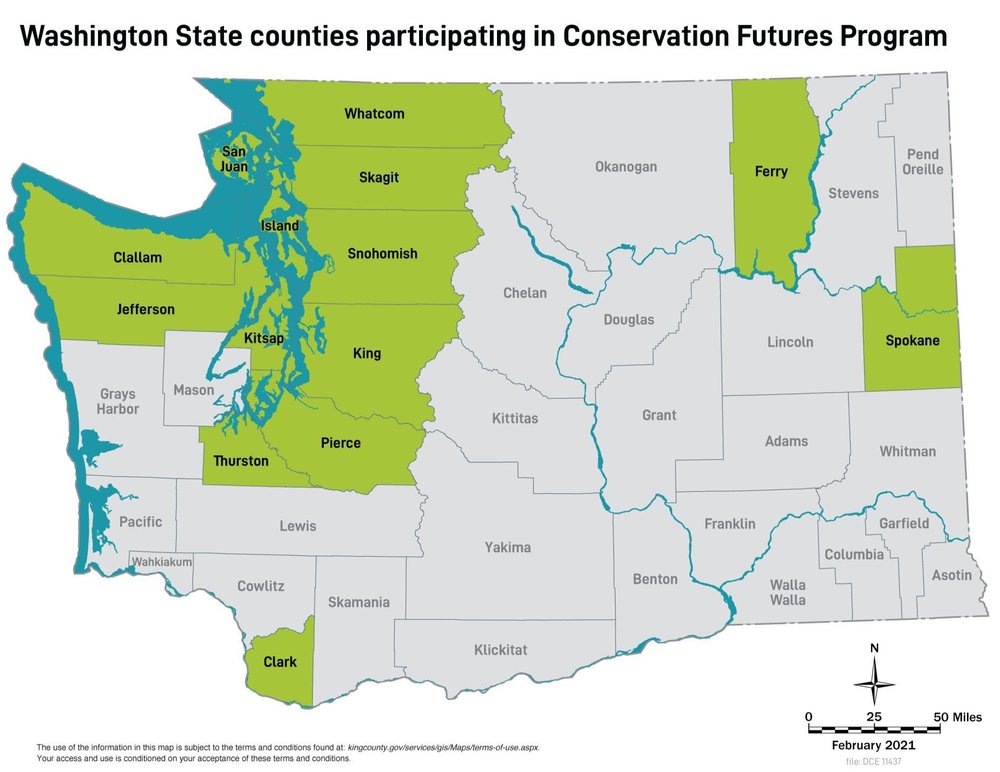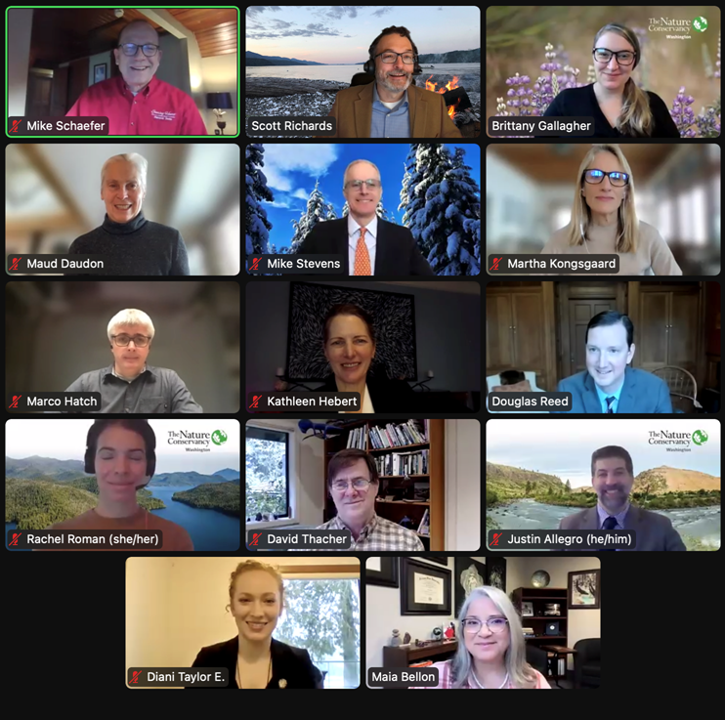Sign in Pro to support Conservation Futures
The Conservation Futures bill (HB 1672) is in the House Finance Committee. Let those committee members know you support it by adding your name at the Committee Sign in page before the hearing on January 18.
(Not sure how this works? Here’s what “sign in pro” means.)
We all know — especially after the past couple of years — that access to the outdoors is crucial public health infrastructure. Everyone needs a place to get outside, take a deep breath, exercise, play.
Washington’s Conservation Futures program has helped counties across the state ensure and expand access to parks and open space for residents for more than 50 years. But as our population grows and property values climb, a conflict in the law authorizing Conservation Futures threatens to erode the utility of the program for counties.
Small fix, big difference
Click to enlarge: Map of counties participating in Washington’s Conservation Futures program. Courtesy of the Conservation Futures Coalition.
House Bill 1672 clarifies an ambiguity in existing state law to restore local control for the conservation of parks, farmland and forests, allowing local jurisdictions like counties to use the property taxes they already collect however it works best for their communities — including for conservation.
Working together
Washington’s Conservation Futures program is an important source of matching funds for federal dollars from programs like the Land and Water Conservation Fund, which is responsible for protecting some of our state’s most precious outdoor places. Take a quick photo tour of just a few of the stunning spots LWCF protects in our state.
Speak up for local conservation capacity
Your voice makes a difference. Help ensure communities across Washington continue to have access to parks and open spaces by signing in “pro” before the House Finance Committee hearing on January 18.
Learn more from the Conservation Futures Coalition
Sign in Pro before 1/18 House Finance Committee Hearing
Banner photo by Breanna Oakley.




